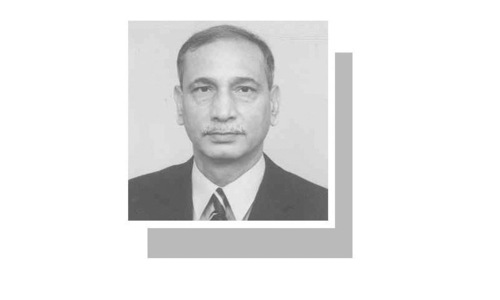Punjab has spent just a fraction — 16pc — of its total development fund of Rs550bn during the first five months of the present financial year, from July through November.
Experts blame the line departments’ lack of capacity to plan, design and implement projects, bureaucratic lethargy, and political interference for the slow pace of utilisation of funds meant to extend and improve the quality of service delivery to the people.
“Historically, the pace of fund utilisation picks up momentum in the third quarter of the financial year, which often results in widespread misuse and waste of taxpayers’ money as authorities try to use more funds in less time,” an economist, who has experience of working with federal and provincial governments, argued while speaking to Dawn last week.
A retired public servant insisted that almost a third of the total ‘utilised’ money is either stolen or is wasted because of the delays in planning and execution of schemes as the government hastily tries to meet its development spending targets towards the end of the year.
The Shahbaz Sharif government’s Rs1.45tr budget for the present financial year proposes to create half a million jobs in the province through investment in large transport, water supply, irrigation, agriculture, and energy infrastructure projects.
‘The pace of fund utilisation in Punjab picks up momentum in the third quarter of the financial year, which often results in widespread misuse and waste of taxpayers’ money as authorities try to use more funds in less time’
The programme is being financed by an estimated revenue surplus of over Rs435bn and soft foreign debt of Rs115bn that includes a Chinese loan of Rs85bn for the controversial Lahore Orange Line Metro Train project.
About 86pc of development allocation constitutes the core provincial annual development programme (ADP) and the rest has been qualified as ‘special development initiatives’.
The proposed development investment for the present year is 37.5pc greater than the original spending estimates of Rs400bn — including Rs333bn for the core programme — for the last fiscal year and forms almost 38pc of the ongoing year’s budget.
The provincial government has consistently raised development expenditure over the years on the back of the increased federal transfers under the 2009 National Finance Commission (NFC) award. It expects higher expenditure on development of large infrastructure to improve business climate in the province and attract private investment in industry.
It also anticipates the development of trade and energy infrastructure under the China Pakistan Economic Corridor (CPEC) to create ‘remarkable opportunities’ for the province.
“Augmented with the prospect of regional integration within South Asia and economic cooperation with Turkey, Punjab can outperform its previous economic growth rates… the government is tailoring its policies to crowd-in private investment by providing a propitious investment climate, which will reverse the declining trend of private investment over the past several years,” say the budget documents for the ongoing fiscal year.
The government is confident that its development policies will reform the “business climate and have a positive impact on industrial growth, domestic commerce, exports and employment… The development schemes that create and enhance urban clusters and ensure provision of requisite services are prioritised.”
However, many question Chief Minister Shahbaz Sharif’s development choices, as well as his policy of diverting greater resources to projects in Lahore and other cities in the central and northern regions of the province at the expense of the impoverished south Punjab.
Critics of his development priorities allege that his policies have deepened disparity between the southern parts of the province and the rest of Punjab, and affected the quality and reach of service delivery in the regions away from Lahore as is reflected by the number of out-of-school children, lack of healthcare facilities, poverty incidence, unemployment, etc in those areas.
Additionally, they argue, the productive sectors in the province have suffered enormously over the past several years because of low public investment on agriculture, irrigation and industry; a major factor in the significant decline in private investment in manufacturing and other job creating sectors over time.
“Our textile exports from Punjab have declined substantially over the last three years as factories are closing down because of energy shortages and high electricity and gas prices. Similarly, our rice and cotton growers have incurred massive losses owing to successive crop failures because the government has done little or nothing to protect farmers against the impact of climate change and market fluctuations,” contended the publicity-shy economist.
He said development interventions could prove to be the principal drivers of pro-poor and inclusive economic growth, but such hadn’t happened in case of Punjab because of the government’s focus on large infrastructure projects in a few major cities that could help the ruling party during elections. Instead, such interventions have widened the wealth and infrastructure gap between different provincial regions, further impoverishing the poorer areas.
A cursory examination of development spending during the last several years lends credence to this view, showing that the government frequently curtails budgetary allocations for education, health and water supply — as well as share of south Punjab — to divert funds to mega, politically motivated infrastructure schemes in Lahore and elsewhere in the central region of the province.
Published in Dawn, Business & Finance weekly, December 19th, 2016











































